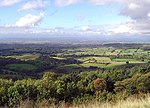Brompton railway station
1854 establishments in England1965 disestablishments in EnglandBeeching closures in EnglandDisused railway stations in North YorkshireFormer North Eastern Railway (UK) stations ... and 5 more
Pages with no open date in Infobox stationRailway stations in Great Britain closed in 1965Railway stations in Great Britain opened in 1854Use British English from May 2018Wikipedia page with obscure subdivision

Brompton railway station was a railway station that served the town of Brompton, North Yorkshire, England. It was opened in 1854 and closed in 1965. The line it was on is still open and carries passenger traffic to and from Sunderland and Middlesbrough to Manchester Airport and London King's Cross.
Excerpt from the Wikipedia article Brompton railway station (License: CC BY-SA 3.0, Authors, Images).Brompton railway station
Brompton Lane,
Geographical coordinates (GPS) Address Nearby Places Show on map
Geographical coordinates (GPS)
| Latitude | Longitude |
|---|---|
| N 54.3645 ° | E -1.4250277777778 ° |
Address
Brompton Lane
Brompton Lane
DL6 2RU
England, United Kingdom
Open on Google Maps











